
 |
 |
 |
 |
 |
What
Trees might you find in a hedge?
Flowers | Planting | Trees
Trees
Hawthorn - Whitethorn
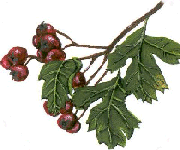
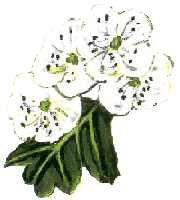
The Hawthorn - Whitethorn Tree
Hawthorn is widespread in Ireland being valuable for both wildlife and farmers. It’s service as a hedgerow tree comes from its resilience to trimming, forming a dense livestock barrier with the added deterrent of thorns. It grows just about anywhere. Though the wood is strong , it is seldom used now.
Formerly it was used in mallets, tool handles and mill wheels. It also makes excellent charcoal. Folklore attached to it is abundant and it is commonly found near ‘holy wells’, though it is unlucky to bring fresh blossoms, or haws, into the house (it was believed that they smelt like the plague!) The small leaves of the Hawthorn are irregularly lobed and usually herald the arrival of spring. But it is the flowers and berries which are of interest to wildlife.
Hawthorn is an excellent wildlife plant, supplying both food and fortified shelter. The flowers, which appear around May, (another name for Hawthorn is May) are heavily scented and attract bees and wasps. The berries are devoured by the many birds, and help sustain them through the early winter. Some birds have been known to defend ‘their’ Hawthorn from other birds!
Hazel
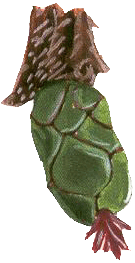
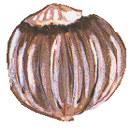
The Hazel Tree
Hazel rarely grows tall enough to be considered a tree, rather it forms into dense scrub in limestone areas such as the Burren, Co. Clare. In the past, Hazel was planted as a coppice tree in managed Oak, Ash woodlands. It produces healthy branches from the cut stump in a short time, a valuable crop with many uses.
Hurdles, thatching-spars, and other pliable items are made from the Hazel tree. Having become an almost forgotten in the last few years, coppicing of Hazel has been reborn. In the process, trees which were dying from neglect have been regenerated, along with the wildlife associated with them. Hazel supports a moderate variety of insects and fungi, some specific only to the plant. The young bark has a characteristic mottled appearance and the leaves are large and soft to touch.
Nuts ripen in October and are favoured by Squirrels, Jays, Pheasants and Wood Pigeons. Hazel wood was used to ward off evil, in water divining and nuts were carried for good luck.
The Larch Tree
The Larch, not a native, is a rare conifer in that it sheds it’s leaves annually. It does not completely overshadow other species and understory plants like other forestry trees. Larch is beneficial to a variety of wildlife. It produces a strong, durable wood mainly used for fencing.
Planting these conifers introduces an acceptable variety to our woodlands. It assists native wildlife by offering a diversity of habitats for nesting and looking for food. It’s fissured trunk is home to many insects.
Oak
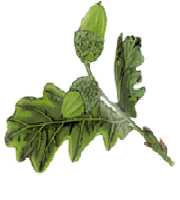
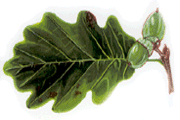
The Oak Tree
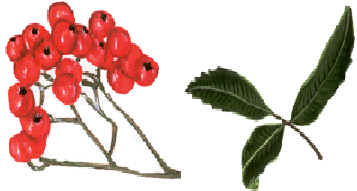
The Rowan or Mountain Ash Tree
Scots Pine
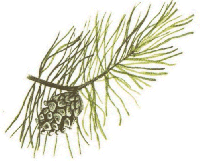
Back to Previous Trees Page | Back to the home page | More Trees